Material on this page is relevant to the outbursting young stellar object
discussed in
ATel 7428
and
ATel 13321.
SUMMARY:
Two previously recorded brightening events in 2015 and 2018
of the source designated as iPTF 15afq
were consistent with moderate scale and short-lived ``EX Lup type'' bursts.
The ongoing 2019-2020 outburst of iPTF 15afq / Gaia 19fct is much larger.
The total amplitude and the duration are obviously as-yet unknown;
however, the nature of the optical absorption spectrum in outburst
may indicate a more dramatic accretion event, such as an ``FU Ori type'' outburst.
Multi-color photometric follow-up over the next several months is encouraged.
DETAILS:
The source of interest is located at 07:09:21.39 -10:29:34.55 (2000.),
in the Canis Majoris (CMa) star forming region.
The
spectral energy distribution is that of a Class I source.
Images below are 2MASS near-infrared and Spitzer/GLIMPSE360 mid-infrared
color renditions from Aladin, with ~15' FOV.
PanSTARRS images
reveal a 2" separation east-west pair, with the outbursting source
the eastern, (now much) brighter object.
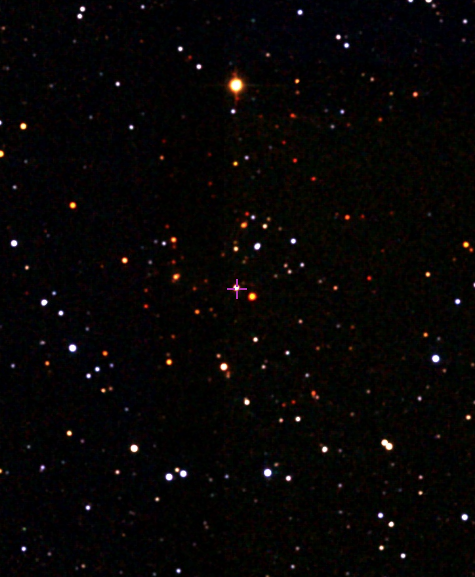
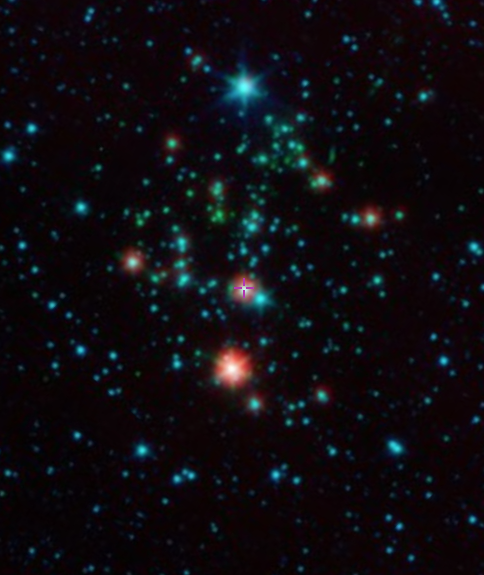
History of iPTF 15afq (recently also labelled as Gaia 19fct -- see below)
An optical brightening of a previously unstudied star near CMa R1
was announced in 2015 at
ATel 7428.
The source was later cataloged by Fischer et al. (2016, AJ 827, 96)
and Sewilo et al. (2019, ApJS 240, 26)
based on having
the infrared spectral energy distribution of a young star plus a disk/envelope.
Optical lightcurve, with L and H indicating epochs of low- and high-dispersion spectroscopy:
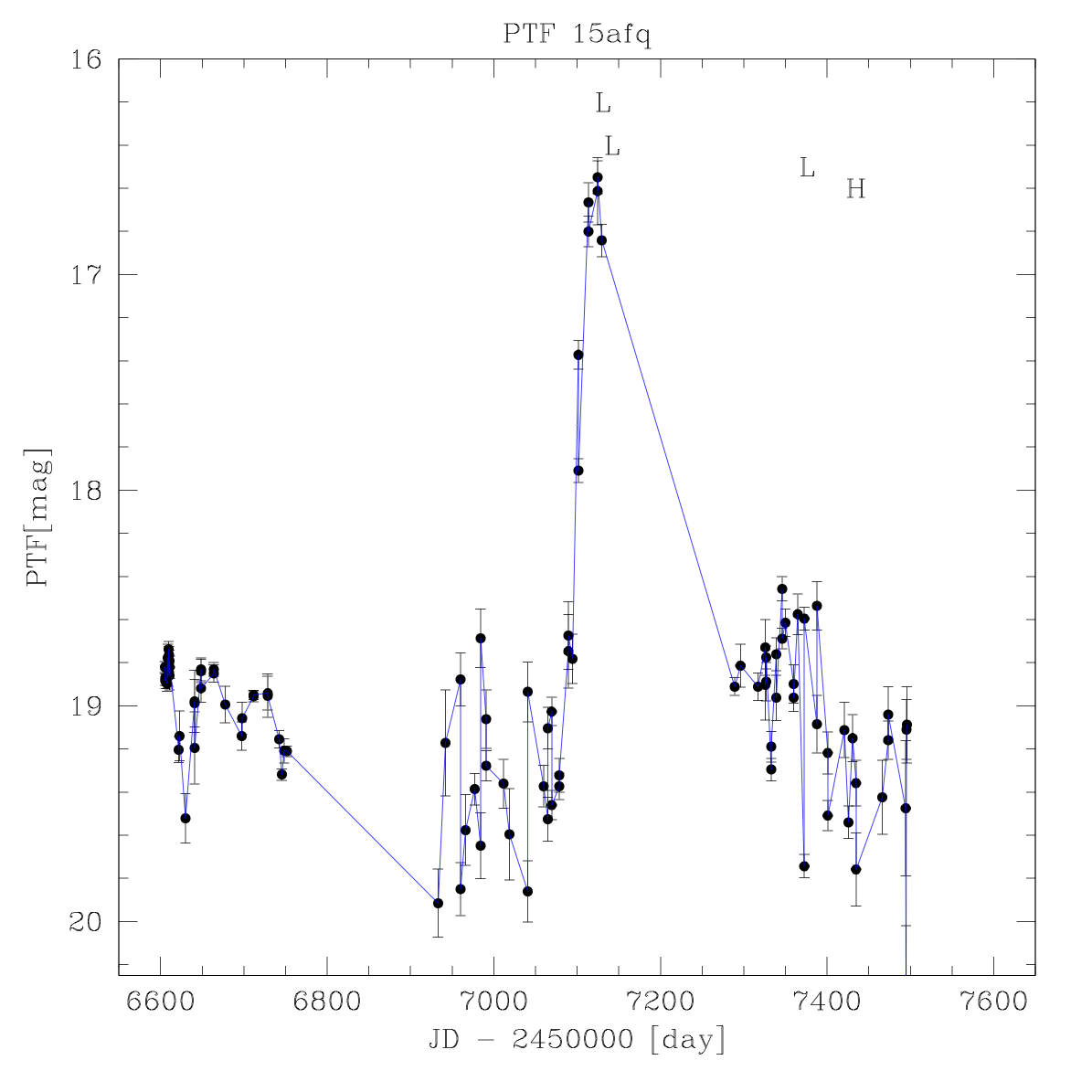
The 2015 burst was a 2.5 mag brightening event that took about 50 days
to go from quiescence to peak
at R_PTF = 16.5 mag, and lasted <6 months.
Low resolution optical spectrum and comparison to PTF 10nvg:
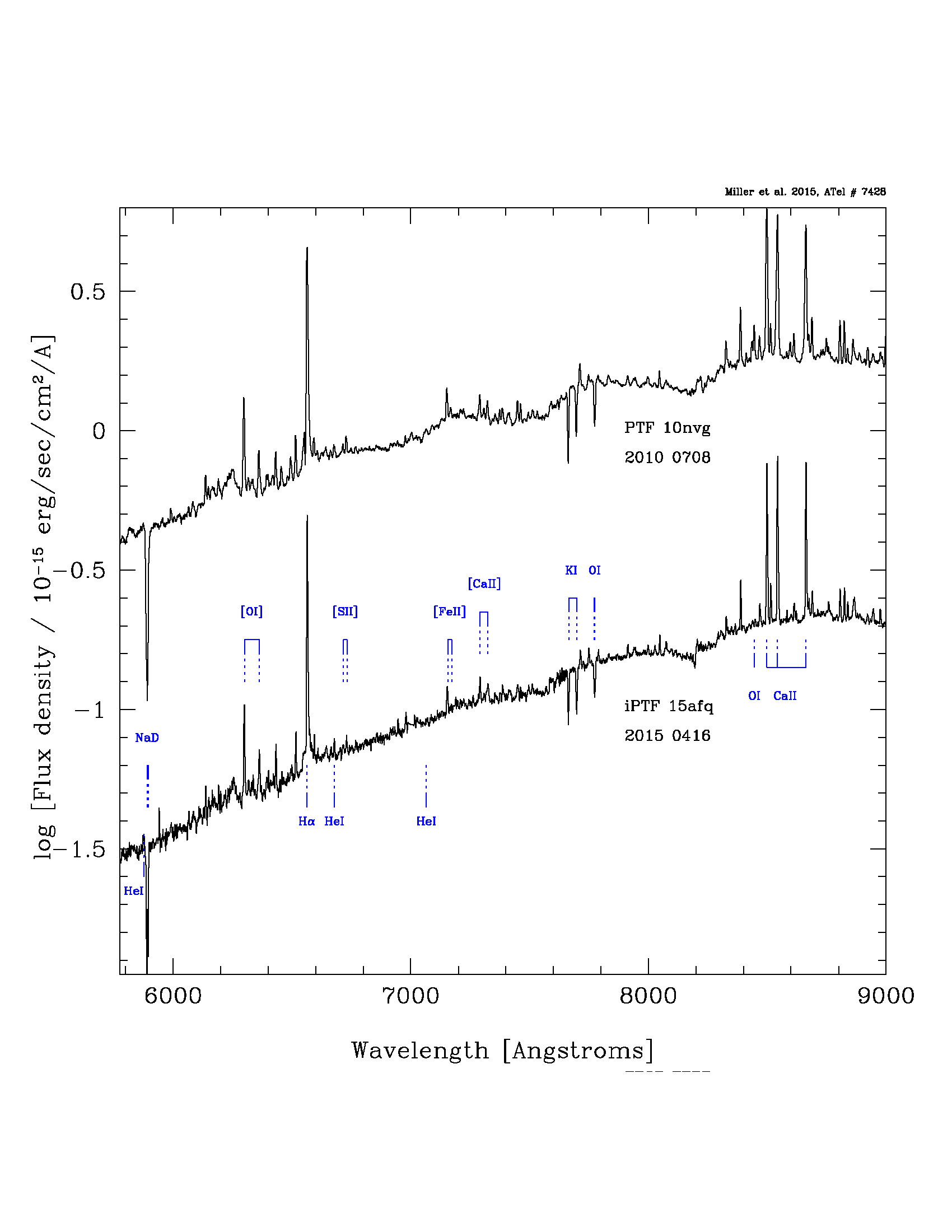
The outburst spectrum was a continuum-plus-emission source,
and similar to the burst phases of PTF 10nvg (V2492 Cyg) in having rare TiO emission.
Spectral evolution as the burst faded:
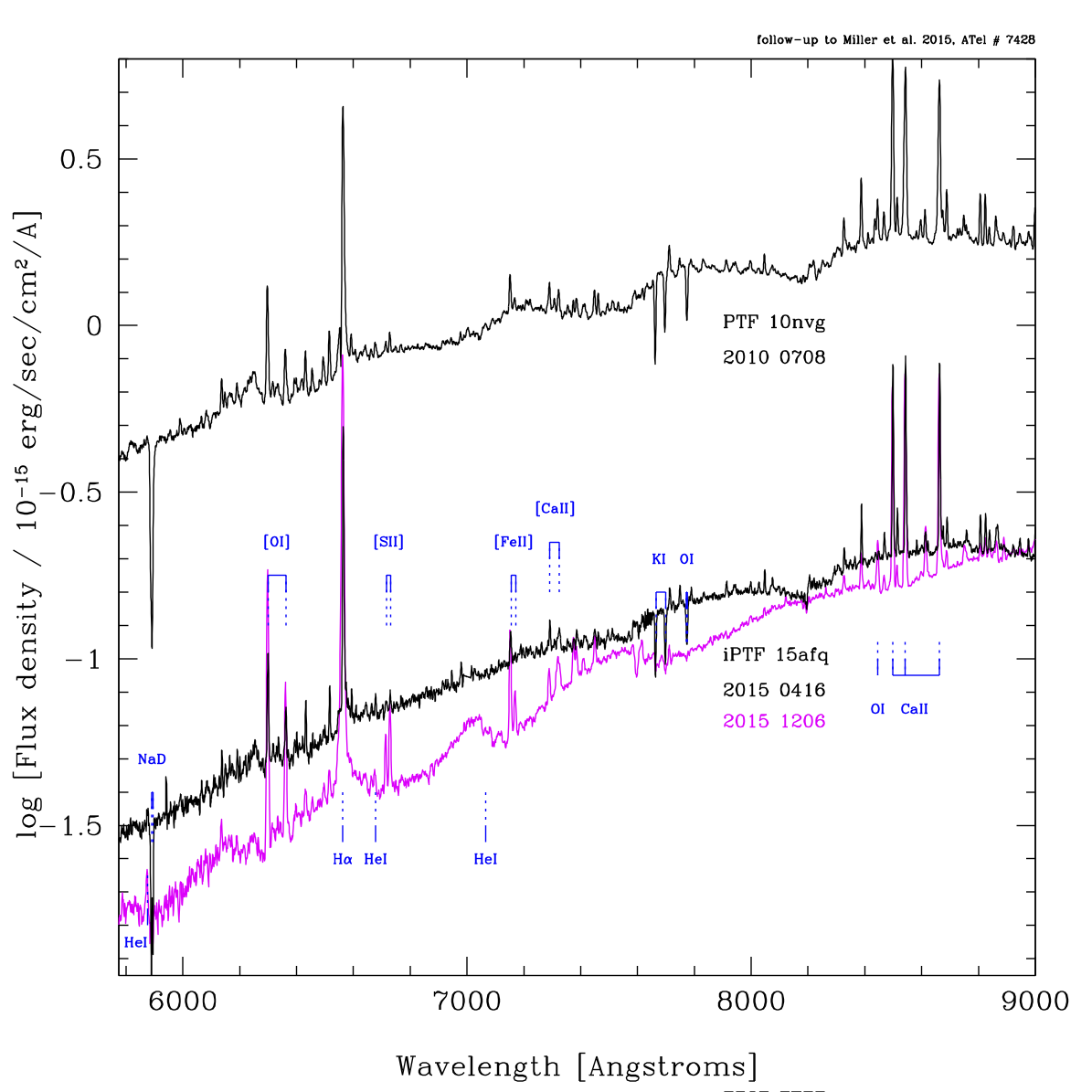
As the continuum faded, an M-type absoption spectrum appeared, along with
additional emission lines
that previously had been overwhelmed by the bright continuum.
The strong wind signatures in e.g. NaD, KI, and OI also disappeared.
The faint-state spectrum appears to be
that of a rigorously accreting T Tauri star.
High resolution profile at Halpha, in quiescent state:
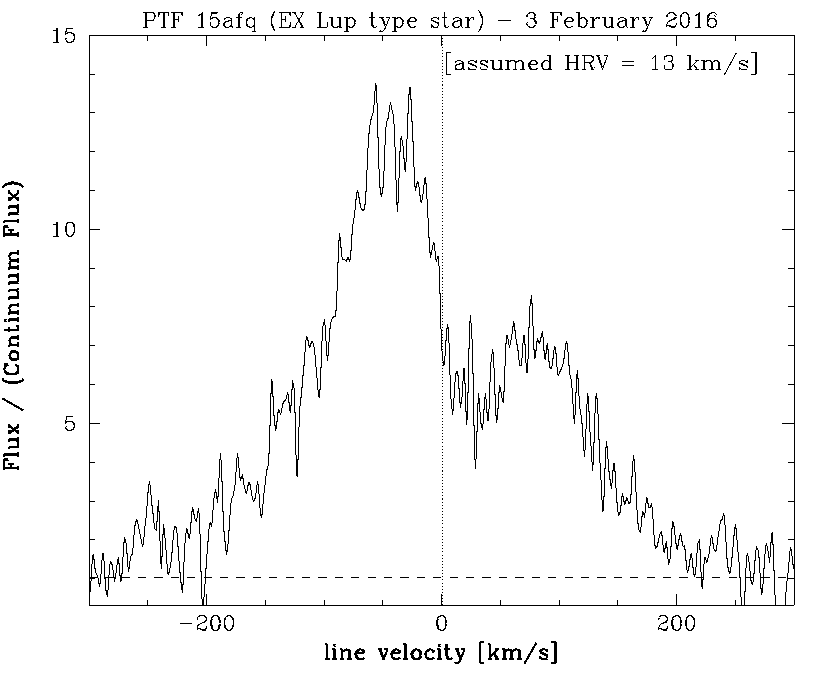
The source has undergone subsequent brightening events
in 2018 and 2019, detected by ZTF and Gaia.
These are discussed in the 2019 announcement
ATel 13321.
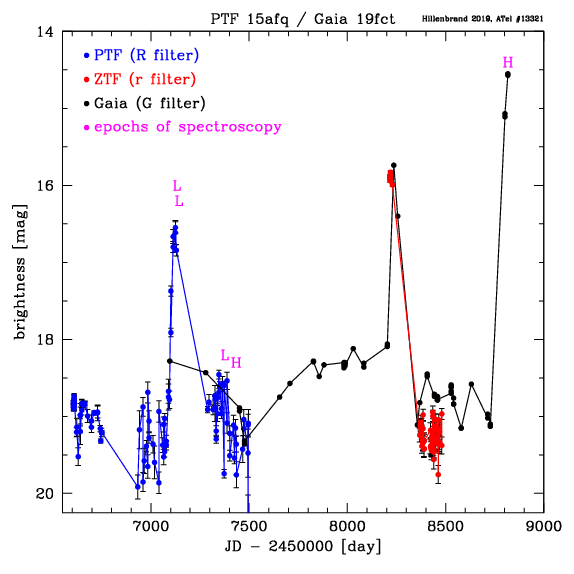
The photometry available in
DR1 of the Zwicky Transient Facility (Masci et al. 2019)
and in the
Gaia Photometric Science Alerts (Hodgkin et al. 2013)
shows another brightening event in 2018,
with a rise amplitude of >2.5mag on a time scale of <33 days (the peak is not measured).
This 2018 burst can also be designated as ZTF18acrvbix, but it was not noticed by humans at the time.
From r < 15.8 mag, the source subsequently declined to 19-19.5 mag in <4 months.
The current 2019 outburst, designated as Gaia 19fct, reaches G < 14.6
(the peak is not yet measured).
The brightening episode appears to have commenced between JD=2458765 and JD=2458782.
The rise to date is by >4.5 mag, taking <75 days, with a current rise rate of -0.075 mag/day.
Infrared lightcurve:
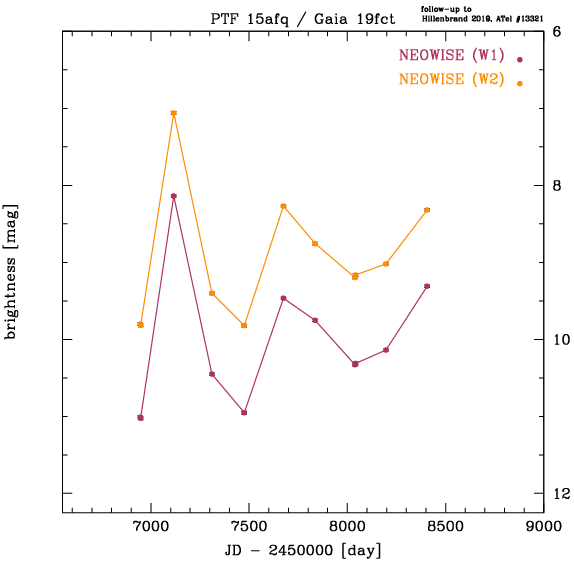
The 2015 optical event also corresponds to a peak in NEOWISE (3.4 and 4.6 micron) brightness.
The source seems slightly bluer when brighter, but by no more than 0.1-0.2 mag.
There are several additional infrared brightenings in the NEOWISE data
that are not seen in at optical wavelengths.
Conversely, the 2018 optical event does not seem to have a corresponding infrared peak.
The 2019 optical event has been observed from 0.5 um to at least 1.2 um (J-band).
Keck/HIRES spectrum corresponding to the epoch indicated by the latest "H" above:
-- blue ccd
-- green ccd
-- red ccd
A high resolution (R=37,000) optical spectrum of the outburst was obtained
on 29 November, 2019 (UT) with HIRES (Vogt, 1994) and the W.M. Keck Observatory's Keck I Telescope.
This spectrum is absorption-dominated
with no signature of the permitted- or forbidden-line emission
that was present earlier in both the faint state and in the 2015 outburst state.
The current spectrum is instead characterized purely by
absorption from broadened metal lines, with line widths about 70 km/s.
The line shapes are v-like or u-like, and not as box-shaped as those in PTF 10qpf (HBC 722).
The temperature or mix of temperatures in these two objects is quite similar, however.
The iPTF 15afq / Gaia 19fct spectrum is warm, with current spectral type in the F0-F5 range if a dwarf/giant, and F5-G0 if a supergiant.
In quiescence, the spectrum was cooler, of spectral type early M (see above).
BaII at 6142 A and 6497 A, an indicator of a low surface gravity atmosphere,
and LiI at 6707 A, a signature of stellar youth, are both clearly present in the outburst state.
There are also strong signatures of a wind, including blueshifted absorption in MgIb, NaD, and KI 7699,
as well as clear P Cygni profiles in Halpha and in the CaII triplet.
The terminal velocity of the blueshifted absorption in the above lines
is currently only about -120 km/s.
Previously, in the faint state, the Halpha line exhibited double-peaked emission (see above),
while the CaII lines were narrow and singly peaked at the rest velocity.
The Paschen series and the Brackett series of HI are also seen in absorption and are (likely) blueshifted.
There are ongoing spectral changes, with high dispersion spectra taken
two nights apart showing changes in the morphology of the wind lines.
Finally, we note the presence of optical nebulosity in the telescope guider
that is not present in previous images, e.g. from PanSTARRS.
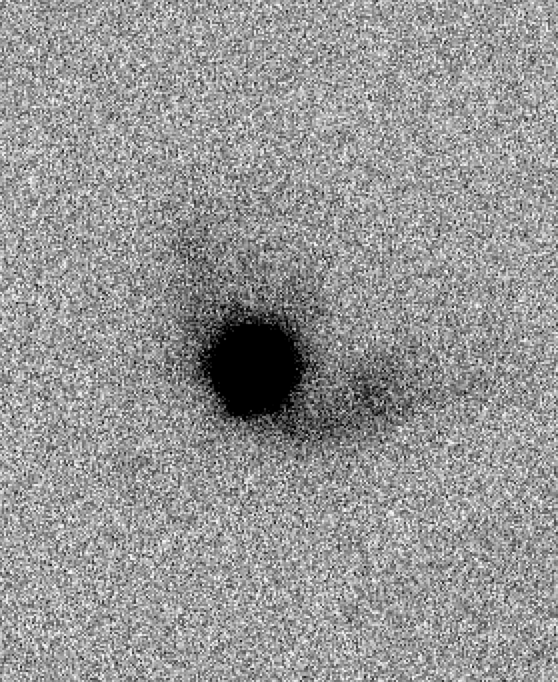
(i *believe* but am not certain that the image rotation is 15.5 degrees from standard N=up; E=left)
back to lynne's page








